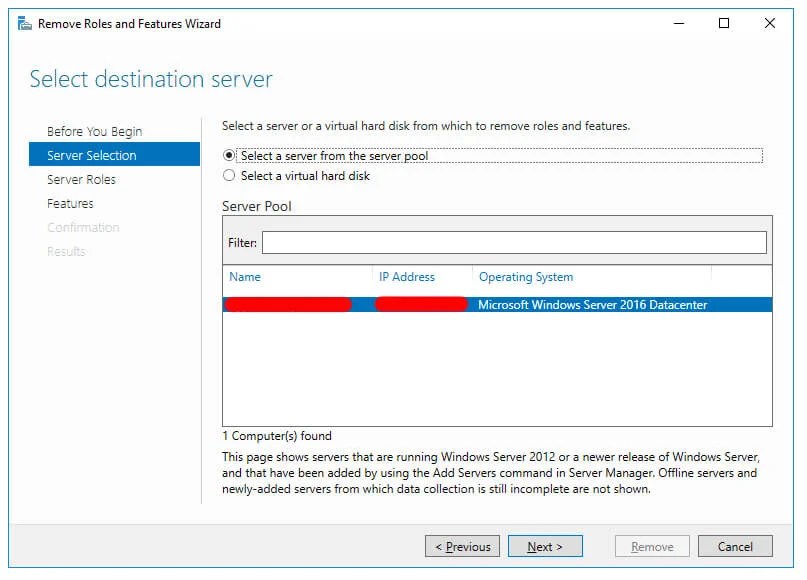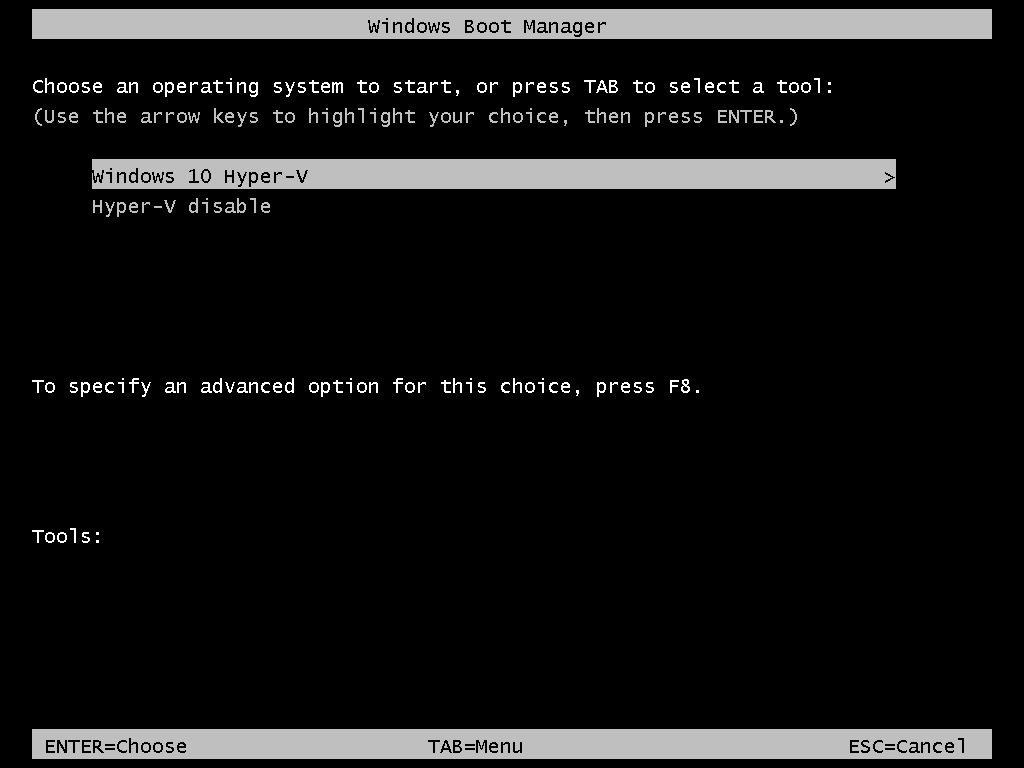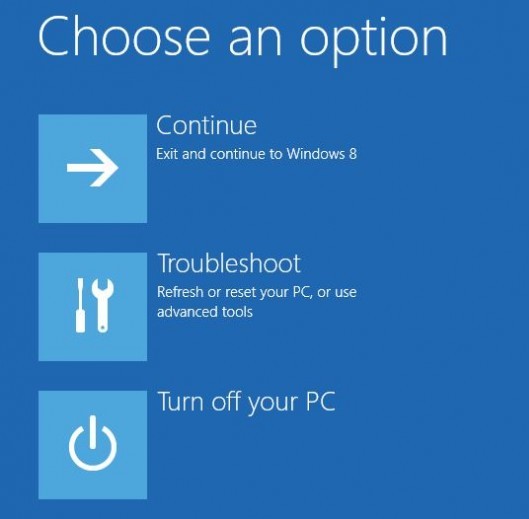Microsoft Hyper-V is a type 1 hypervisor that you can install on Windows – including on Windows 10 and Windows Server 2019. In some scenarios, you may need to uninstall Hyper-V on your Windows machine. For example, VMware Workstation and Hyper-V are not compatible when installed on the same machine. The same issues occur with other type 2 hypervisors like VirtualBox.
Whatever your case, learn how to uninstall Hyper-V in Windows using two methods: via the GUI (graphical user interface) and via the CLI (command line interface).
How to Uninstall Hyper-V in Control Panel of Windows 10
Using the Control Panel to uninstall Hyper-V is the most convenient method and is preferred by most Windows 10 users. As a result, the Hyper-V feature is uninstalled completely. Let me explain the workflow step by step.
- Click Start, type Control Panel, and open Control Panel. There are two alternative methods to open Control Panel. Press the Win+X combination on your keyboard, and, in the menu that opens, click Control Panel. Press Win+R. In the Run field, type appwiz.cpl and press Enter.
- Click Turn Windows features on or off in the Control Panel window.
- In the Windows Features window that opens, deselect the Hyper-V checkbox. Make sure that checkboxes in Hyper-V subfolders are deselected. Hit OK to save settings and start the Hyper-V uninstallation process.
- Hit Restart now to restart your computer to finish the process and uninstall Hyper-V.
How to Uninstall Hyper-V in the Command Prompt of Windows 10
You can uninstall Hyper-V in the command line interface (CLI). At the end of this workflow you get the same result as for the method explained in the previous section when using the graphical user interface (GUI). Check the Hyper-V installation status in the command line before you start to uninstall Hyper-V and after you uninstall Hyper-V to make sure that this hypervisor is removed from your Windows system.
- Open the command line (CMD) as administrator. Open the Windows Start menu, type cmd, right click the cmd entry, and click Run as administrator.
- Run systeminfo to check whether Hyper-V is installed.
- Now it is time to uninstall Hyper-V in Windows 10 by using the command line. You should open PowerShell with administrative privileges (type PowerShell in the Start menu, right click PowerShell and click Run as administrator just as you do to run CMD). Run the following command to remove the Hyper-V feature from Windows 10:
Disable-WindowsOptionalFeature -Online -FeatureName Microsoft-Hyper-V-All
Do you want to restart the computer to complete this operation now?
Type Y and hit Enter. - Restart is required after executing this command. You can type N (No) and restart Windows manually.
Removing Hyper-V with DISM
DISM (Deployment Image Servicing and Management) is a tool for working with Windows images (.wim files) and install/uninstall Windows drivers, features, and packages.
Open PowerShell with administrative privileges, and run this command to disable Hyper-V:
DISM /Online /Disable-Feature:Microsoft-Hyper-V
You may need to disable Secure Boot in UEFI/BIOS settings of a computer to finish the uninstallation process and uninstall Hyper-V. The sequence to disable Secure Boot depends on your hardware vendor and differs for different motherboard vendors and models.
You can change Hyper-V startup options when Windows boots without uninstalling Hyper-V completely. In this case, Hyper-V is installed but inactivated. Hyper-V is not booted before Windows boots if you disable Hyper-V by using the command line bcdedit tool. Bcdedit is the command line tool to manage Boot Configuration Data or BCD. BCD store is used to describe boot parameters for applications, add boot menu entries, etc.
If you use BCD to disable Hyper-V, the Hyper-V feature is disabled but not uninstalled completely from Windows. As you remember, Hyper-V is the first-type hypervisor that boots before Windows boots. The idea of using this method is to disable Hyper-V in boot configuration.
- Run the command prompt (CMD) as administrator and run the following command to disable Hyper-V by using bcdedit:
bcdedit /set hypervisorlaunchtype off
Note: If you need to enable Hyper-V again, run bcdedit /set hypervisorlaunchtype on - For more convenience, you can create two boot entries for your Windows machine. One boot entry is used to boot an operating system with Hyper-V, and another one is used to boot an OS without Hyper-V.
- Run the following command to copy the default boot configuration to the new entry. “Hyper-V disable” is the name of the new boot entry in my case.
bcdedit /copy {default} /d “Hyper-V disable” - The following output message is displayed:
“The entry was successfully copied to {xxxxxxxx-xxxx-xxxx-xxxx-xxxxxxxxxxxx}.” - Run the command to edit Hyper-V boot options for the new boot entry you have created. Copy the value in brackets {} from the above output message and paste to this command:
bcdedit /set {xxxxxxxx-xxxx-xxxx-xxxx-xxxxxxxxxxxx} hypervisorlaunchtype off - You should see the message: The operation completed successfully.
- Edit the name of the default boot entry with Hyper-V to “Windows 10 Hyper-V” for more convenience:
bcdedit /set {default} description “Windows 10 Hyper-V” - Restart your computer.
Now you have two boot menu entries. Select “Hyper-V disable” to boot Windows without Hyper-V or select “Windows 10 Hyper-V” to boot Windows with Hyper-V.
How to Uninstall Hyper-V on Windows Server 2016
The process of removing Hyper-V in Windows Server 2016 is slightly different compared to Windows 10. In this section, I explain how to uninstall Hyper-V in Windows Server 2016. If you use Windows Server 2019, the workflow to uninstall Hyper-V on Windows Server 2019 is identical.
Using the GUI
If your Windows Server is installed with the graphic experience and has a graphical user interface (GUI), then the easiest way to uninstall Hyper-V is using Server Manager and the Remove Roles and Features wizard.
Open Server Manager (Start > Server Manager). Click Manage > Remove Roles and Features.
The Remove Roles and Features wizard opens.
Before You Begin. There is nothing to configure at this step, but you can select the Skip this page by default to avoid displaying this page in the future. Click Next to continue.
Server Selection. Select a server from the server pool and select your server in the list. The server name is Hyper-V-Repl.test.net in my case. Hit Next at each step of the wizard to continue.
Server Roles. Deselect the Hyper-V checkbox in the list of roles to uninstall Hyper-V.
The popup window opens. Check the features that you are about to remove. Select Remove management tools (if applicable) to remove Hyper-V Manager Windows tools. Click Remove Features.
Features. There is no need to remove custom features when you uninstall Hyper-V. Leave features configuration as is.
Confirmation. Check all items that are going to be removed. Select the checkbox if you want your server to restart automatically when the Hyper-V role is removed. Otherwise, you need to restart Windows manually for changes to take effect and finish Hyper-V uninstallation. Click Remove to finish and uninstall Hyper-V.
Using PowerShell
The PowerShell command to uninstall Hyper-V in Windows Server 2016 and 2019 is not the same as in Windows 10.
Open PowerShell as administrator.
Run the following command to uninstall Hyper-V on Windows Server 2016:
Remove-WindowsFeature -Name Hyper-V
Restart the server to finish the removal process.
Issues that Can Occur
Sometimes issues may occur when you try to uninstall Hyper-V in Windows 10 and Windows Server 2016 or 2019. Let me explain some common issues and offer recommendations to help fix these issues.
Case 1
If you see a message that Windows cannot uninstall Hyper-V components, try to check system files and their storage. Different error codes are displayed, for example, 0x800F0831, 0x80073701, etc. Use command line tools to fix this issue. Open the command line (CMD) with administrative privileges and run the following commands.
Dism /Online /Cleanup-Image /RestoreHealth
Dism.exe /online /Cleanup-Image /StartComponentCleanup
sfc /scannow
Disable-WindowsOptionalFeature -Online -FeatureName Microsoft-Hyper-V-All
After executing these commands, logs are written to CBS.log and dism.log. Logs are useful for troubleshooting.
Case 2
Hyper-V is not uninstalled because a virtual network adapter or a virtual switch created by Hyper-V is present in a host Windows system. Remove virtual Hyper-V network adapters, and try to uninstall Hyper-V again. Here are some posts about Hyper-V network adapters and virtual switches from our blog.
Case 3
You disable Hyper-V but after reboot, Hyper-V is enabled again. A possible cause may be that a group policy is set to enable Hyper-V automatically on login after each boot. A system administrator should edit group policy configuration to fix this issue. Remember, that Device Guard and Credential Guard are features using Hyper-V to work in Windows. Check Computer Configuration -> Administrative Templates -> System -> Device Guard in the group policy editor to make sure that there are no settings to force run Device Guard on a Windows machine.
Conclusion
Hyper-V can be uninstalled with a graphical user interface or a command line interface in Windows 10 and Windows Server 2016/2019. The workflow is different for Windows 10 and Windows Server operating systems. If you have uninstalled Hyper-V, you can use another hypervisor to run virtual machines. Read the blog post about Hyper-V vs VMware and Hyper-V vs VirtualBox comparison to make the right choice.
Remember to back up your virtual machines to protect your data. NAKIVO Backup & Replication is a product that supports backup of VMware VMs and Hyper-V VMs. Download the Free Edition of NAKIVO Backup & Replication and try the product to protect your virtual machines.
Join
- Learn
- Virtualization
- Server Virtualization
- Microsoft Hyper-V


to enable IT peers to see that you are a professional.
Last Updated:
Jan 26, 2023
4 Minute Read
-
Spice
-
Reply (0)
-
Subscribe
-
Share
Opens a new window
-
Facebook
Opens a new window -
Twitter
Opens a new window -
Reddit
Opens a new window -
LinkedIn
Opens a new window
-


to enable IT peers to see that you are a professional.

What’s this?
Microsoft Office 365
- Microsoft Office 365 |
- Microsoft Teams |
- Data Backup |
- VMware |
- Microsoft SharePoint
Sign Up
Hyper-V is a preinstalled application on different Windows OS and Servers. There are users who love to use Hyper-V, on other hand there who don’t. If you are one of those who have enabled their Hyper-V and didn’t like it; now want to uninstall Hyper-V, then this will help.
Reasons behind disabling the application can be different errors, compatibility errors with Blue-stacks, or confusing user experience. No matter, what the problem is, you still can’t uninstall the application at all. Let me explain; Hyper-V comes preinstalled on different Windows editions like Professional, Enterprise, or Education (on Windows10).
You can only disable it; you can’t uninstall it. There is also the option to use alternatives, as VMware Workstation, Virtual Box… More About Hyper-V here.
Related: How to Fix BlueStacks Error on Hyper-V?
How to Uninstall Hyper-V on Windows?

Before we continue, if you want to check Hyper-V on your system, then you can go to Start and open RUN. Inside the RUN, type “msinfo32.exe” and press Enter. It will take you to system information, there in the Hyper-V section, you will find your Hyper-V enabled.
Here are some methods that will help you to disable/uninstall Hyper-V on Windows.
Use Control panel for disabling Hyper-V
Using the Control Panel option is the most preferred option by most of the users. For this purpose, you will go to Start > Control Panel, or you will type “appwiz.cpl” in RUN and will press Enter key.

Then you will open Turn Windows Features ON or OFF. Navigate and find the Hyper-V, uncheck the Hyper-V box, and click on OK. If you are using the new version of Windows 10 then you will also need to uncheck the Windows Hypervisor Platform too.

For changes to be made, a new pop will open with Applying changes. Then you will need to restart your system, for which another window will open as Windows completed the requested changes. You will click on Restart Now button and your system will restart.
Related: Download Hyper-V for Windows 10 for Free
CMD to Uninstall Hyper-V
CMD (command prompt) is another way for the purpose. If you want to use CLI (command line interface) instead of GUI (graphical user interface).

Run CMD as administrator and type “systeminfo” in CMD. There you will find the Hyper-V requirement section. If there is a Yes in front of your Hyper-V, then you will need to deactivate your Hyper-V by using the command below:
Disable-WindowsOptionalFeature -Online -FeatureName Microsoft-Hyper-V-AllPaste the command in CMD and press Enter key. Then you will type “Y” again to confirm the command and press Enter. loading will take place, and you have successfully completed the operation.
Remove with DISM

DISM (Deployment Image Servicing and Management) is another method of uninstalling the application from your system. however; unlike the method above, DISM works with Windows images (.wim).
For this method, you will run CMD or PowerShell as administrator then will use the command below:
DISM /Online /Disable-Feature:Microsoft-Hyper-VLoading will take place, and you have successfully uninstalled the application.
How to uninstall Hyper-V on Windows Server?
Since Windows Server has GUI (graphics user interface) to uninstall the app, then you won’t need to use any commands at all. For this purpose, you will start the Server Manager.

Then you will click on Manage in the menu. There you will find the Remove Role and Features option.
Before You Begin window will appear on your screen, you won’t need to perform any kind of configuration here. You will select Skip this page by default option to avoid further details and will click on Next.

In Server Selection, you will select a server from the server pool. Select the server and click on Next.
Here in Server Roles, you will uncheck the Hyper-V; in the pop-up of Remove features that require Hyper-V? and click on Remove Features.

Again you will be placed in Remove Features window, click on Next to uninstall the application.
Confirm removal selection will appear, click on Remove to start the uninstallation of the applications.
Note: all the application that will be uninstalled that includes Hyper-V will appear on your Confirm Removal Selection window, it didn’t then you will need to go back and uncheck the application and repeat the procedure again.
Related: Download VM Explorer for VMware and Hyper-V
In previous versions, I might be able to remove Hyper-V through ServerManagerCmd.exe but this was apparently deprecated in 2012 (it seems it doesn’t even exist) or dism /Online /disable-feature /featurename:hyper-v but it’s telling me that it can’t provide this service to Windows PE.
How do I accomplish the same thing within Server 2012? Is there a way to access powershell from the menu below? I try going to Command Prompt there and typing powershell but nothing. When I type sconfig to attempt to install powershell, it says that script doesn’t exist.
EDIT:
I’m trying to do this from the recovery command prompt when you start up in advanced startup. I cannot boot into the OS since enabling Hyper-V
I am constantly being returned to this screen pretty much no matter what I do (other than going to command prompt):
The difference is it says continue to Windows DataCenter instead of windows 8. I tried the suggestion here : Server 2012 Server Core powershell not installed
but i get the error «DISM does not support servicing windows pe with the /online option»
asked Sep 25, 2014 at 2:31
3
Ok so I figured it out. Unfortunately it didn’t solve my problem, but at least I got answer to the original question:
Most examples I’ve found on the web gave me this which didn’t work:
DISM /Online /Disable-Feature:Microsoft-Hyper-V
Unfortunately, this won’t work for PE. So instead of using the /Online option, you have to point it to an image. Here is the command I used to get it to finally run
DISM /Image:C:\ /Disable-Feature:Microsoft-Hyper-V
Unfortunately, I’m still stuck in the loop of being returned to this options screen no matter what I do. But I have that posted in a different thread.
answered Sep 27, 2014 at 1:55
SinaestheticSinaesthetic
1791 gold badge2 silver badges10 bronze badges
1
I had this particular challenge and a search for the solution brought me here. However, this is the solution that worked great.
Open command line ( Run as Administrator )
Go to the base prompt ( C:\ )
Type:
bcdedit /set hypervisorlaunchtype off [Enter]
You should get a response «This operation completed successfully»
Restart the computer.
Your VMware should be able to run now with the machines as well.
I got this result on my Windows Server 2012R2
answered Mar 29, 2018 at 9:30
You must log in to answer this question.
Not the answer you’re looking for? Browse other questions tagged
.
Not the answer you’re looking for? Browse other questions tagged
.
Below we may get step-by-step screenshots,
Step 1 — Click on «Start» button.
Step 2 — Click on «Server Manager«.
Step 3 — Click on «Add roles and features«.
Step 4 — Click on «Start the Remove Roles and Features Wizard«.
Step 5 — Click on «Next«.
Step 6 — Click on «Next«.
Step 7 — Locate «Hyper-V» and click the check box to remove tick mark.
Step 8 — Click on «Remove Features«.
Step 9 — Confirm the Tick marks is removed and click on «Next«.
Step 10 — Click on «Next«.
Step 11 — Click on the check box «Restart the destination server automatically if required«.
Step 12 — Click on «Yes«.
Step 13 — Click on «Remove«.
Step 14 — Wait for some time, system will restart.
Step 15 — After restart, wait for some time until Hyper-V role removal completes.
Step 16 — Click on «Close«.
“Thank You for being with me.”















